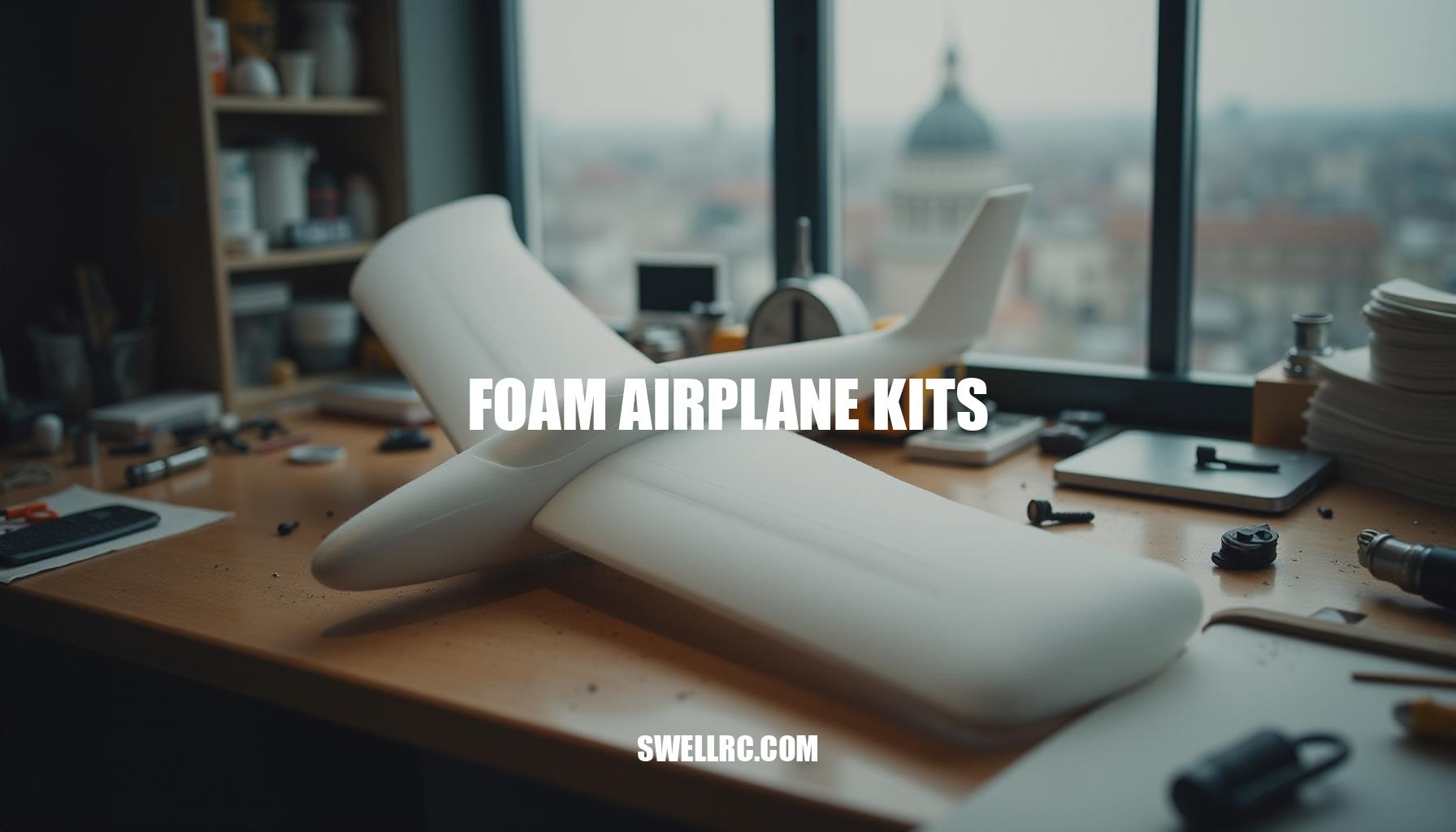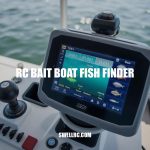Why Foam Airplane Kits Are Revolutionizing RC Flying
After weeks of curiosity, I finally found myself knee-deep in foam fragments and propellers, grinning like a kid at first power-up. That was my gateway into foam airplane kits—the moment I realized how accessible and addictively fun radio-controlled airplanes can be. Foam airplane kits are pre-cut or plan-based model aircraft made from lightweight foam materials, paired with electric RC aircraft electronics, that you assemble and tune yourself.
What hooked me? Affordability, easy repairs (a dab of foam-safe glue and you’re back up), and the design freedom to try anything from ultralight gliders to aerobatic 3D trainers. If you’re just getting your bearings, this primer on foam model airplanes is a great launchpad: https://www.swellrc.com/foam-model-airplane/ Stick with me—I’ll share what I’ve learned from building, crashing, fixing, and flying a hangar full of RC foam planes, and how they reshaped my RC journey.
Whether you’re hunting beginner RC kits or dreaming of advanced electric RC aircraft, foam models open a thrilling world of possibilities.
The Engineering Behind Foam Airplane Kits: Materials and Design
Not all foam is created equal when it comes to RC plane materials. After dozens of flights in gusty parks and calm dawn sessions, three standout options have emerged for me: EPP foam plane foam, Depron, and foamboard aircraft design. Each foam type significantly influences how your RC plane builds, flies, and endures rough landings.
- EPP (expanded polypropylene): Known for being super resilient and slightly rubbery, EPP foam planes excel at bouncing instead of shattering on impact, making them brilliant for beginners and 3D practice.
- Depron: A lightweight and stiff foam, Depron performs best in precision and pattern-style builds but tends to be more brittle on crashes. Ideal for careful pilots chasing crisp lines and control.
- Foamboard: This foam is readily available, easy to cut, and surprisingly capable once sealed properly. I favor foamboard for quick prototypes and budget-friendly, beginner RC kits.
If you’re seeking the best foam for RC planes with a comprehensive comparison—including weight, stiffness, and repairability—this guide helped validate my own testing and experiences.
| Foam Type | Weight (Relative) | Flexibility | Crash Resistance | Best Use |
|---|---|---|---|---|
| EPP | Medium | High (springy) | Excellent | 3D trainers, combat, park flying |
| Depron | Low | Low (stiff) | Low–Medium | Pattern, lightweight aerobatics |
| Foamboard | Medium–High | Medium | Medium | Prototypes, budget trainers |
On windy days, my EPP foam plane builds soaked up abuse and kept flying, showcasing their status as some of the most crash-resistant foam planes around. Meanwhile, Depron rewarded smooth-thumbed pilots with laser-straight tracking, highlighting the subtle but important differences in a Depron vs EPP comparison. Foamboard strikes a balance—it’s easy to build and fix, offers ample lift, and is perfect for slow, confidence-boosting flights.
Building and Customizing: From Flat Foam Sheets to Aerobatic Flyers
One of my favorite builds started as a flat sheet of foam, a printed plan, and a free Saturday. By sunset, I had a lively park flyer that could knife-edge past the soccer goal. Here’s the build flow that keeps me in the zone, perfect for those interested in how to build a foam RC plane or diving into foamboard plane build projects.
- Plan and layout: Print plans or trace templates; mark CG and servo positions early. I often browse RC model airplane kits for inspiration and beginner RC kits ideas.
- Cutting and shaping: A sharp blade and light sanding make cleaner edges and tighter joints, essential techniques in foamboard plane build craftsmanship.
- Gluing: Use foam-safe glue such as CA or hot glue for tack, and epoxy for high-stress joints. Reinforce with carbon spars where needed to strengthen the airframe.
- Electronics install: Dry-fit motor, ESC, and servos; test control throws before final glue. Balance props to reduce vibration, a key step in electronics installation RC plane to ensure smooth flight.
- Center of Gravity (CG): Start slightly nose-heavy; shift the battery aft as you gain confidence. Proper CG balancing is crucial for stable flight dynamics.
- Maiden and trim: Use low control rates for the first flight, make a couple of trim clicks, then tune throws and expo for precise handling.
When I’m building in foamboard, I lean on this resource for design cues and techniques: foamboard plane build resource. It’s invaluable for understanding nuances in foamboard plane builds and electronics setup.
Here are some mod ideas that made a big difference in my builds:
- Graphics: Light paint, vinyl decals, or colored packing tape improve visibility without adding much weight.
- Prop and motor swaps: Upgrading to a motor with a touch more kV or a larger prop diameter can transform climb-out performance—just watch amp draw and ESC temps closely.
- Servo upgrades: Metal-gear mini servos tightened my rolls and landings, enhancing responsiveness.
Lessons learned? Don’t rush the CG balancing process, and always perform range-checks before the maiden flight. The smoothest flyers in my fleet started with patient bench work and small, deliberate tweaks, reflecting best practices in how to build a foam RC plane effectively.
Comparing Foam Airplane Kits to Traditional RC Builds
I love balsa—the smell of fresh-cut ribs and the pride of a hand-iron covering job never gets old. But the foam airplane kit vs balsa kit debate recently made me rethink my approach. Foam kits surprised me by nearly rivaling the flight stability of my long-loved balsa builds, with far less heartache after a rough landing.
Here’s a quick flight dynamics comparison and other factors that might help you choose:
- Cost and time: Foam wins. You’re flying sooner and spending less per airframe.
- Durability and repairability: Foam wins big. Hot glue, foam-safe CA, and a bit of tape get you back in the air quickly.
- Flight dynamics: Balsa remains king for razor-precise tracking in advanced pattern and scale builds—but modern foam can get remarkably close.
- Weight-to-lift ratio: Foam can be extremely floaty; balsa often carries energy better in wind and large maneuvers.
- Maintenance: Foam tolerates dings; balsa demands more careful handling and hanger TLC.
If you’re balsa-curious, classic unpowered and thermal choices abound with RC balsa glider kits. For speed junkies, EDF jet kits provide an exhilarating challenge—with proper build discipline.
For me, foam kits fill the daily-flyer slot—crashable, tweakable, and fun in tight parks—while balsa shines for showcase models and pristine weekend sessions. Understanding the weight-to-lift ratio, durability, and repairability differences between foam and balsa will help you build a collection that truly fits your flying style.
Advanced Foam Airplane Projects and Aerobatic Adventures
When the basic circuits become too easy, advanced foam plane setups truly open up new horizons. Foam, especially in the form of RC pattern plane kits and EPP aerobatic models, allows pilots to chase crisp point-rolls, rolling harriers, and precise uplines without the need to baby the landing. Many wonder, are foam planes good for aerobatics? The answer is a resounding yes—when tuned correctly.
Small changes can make big differences in performance:
- Wing incidence and thrust angle: Adjusting by a degree or two of down/right thrust can help tame pullout tendencies and enhance tracking during complex maneuvers.
- Motor power and prop choice: To unlock true 3D capabilities, target a thrust-to-weight ratio above 1:1, ensuring the ESC has adequate headroom to handle power demands.
- CG position: Moving the center of gravity aft livens pitch response, perfect for harriers and hovers, while shifting it forward promotes stability needed for precise sequences.
- Wing loading: Strategically reinforcing spar caps retains a low weight but boosts stiffness, directly impacting control and responsiveness.
When it comes to tuning RC planes, here are some pro tips that have personally leveled up my foam flyers:
- Employ control mixes such as rudder-to-aileron and throttle-to-elevator to smooth out coupling effects and enhance maneuver fluidity.
- Maintain slop-free control linkages; opting for ball links over clevises improves precision and consistency.
- Keep a detailed log of flights and adjustments—data-driven approaches outperform guesswork when refining your setup.
- Regularly check propeller balance every few sessions; minimizing vibration is key to preserving servos and the airframe.
- Practice new maneuvers at low altitude and low throttle initially, then gradually expand the flight envelope safely.
After several weeks of meticulous trimming and slight CG tweaks, achieving the first seamless slow roll on a foam pattern bird felt like a small miracle. Experiences like this underscore just how far foam planes can go in the hands of skilled pilots, blending the benefits of lightweight construction with the precision and performance demanded by modern aerobatics.
Buying Tips: Choosing the Perfect Foam Airplane Kit
When buying foam airplane kits, matching the kit to your skills and goals ensures more enjoyable flights, fewer repairs, and faster progression. For beginners looking for the best foam airplane kits for beginners, EPP trainers or light foamboard high-wings are ideal. These stable, slow-stalling models are easy to repair and typically feature 3–4 channels, modest kV motors, and durable landing gear.
Browse a variety of foam model airplane and RC model airplane kits pages for inspiration.
Intermediates should consider sport foam planes equipped with ailerons and moderate throw rates. Look for reinforced spars, 30–40A ESCs, and 3S–4S battery setups. Adding rates and expo adjustments offers flexibility for various flying styles.
Advanced pilots often prefer pattern-style or 3D foam planes made from EPP or Depron with carbon reinforcement and precise linkages.
These setups have a thrust-to-weight ratio of 1:1 or higher and require careful center of gravity (CG) adjustments and thorough pre-flight checks.
Your personal flying goals can guide your selection:
- Park cruising and skill-building: Floaty high-wings or gentle sport foam planes offer stability.
- Aerobatics practice: Durable EPP 3D profiles provide confidence during aggressive maneuvers.
- Speed and energy retention: Sleeker foam planes or composite/balsa hybrids suit advanced flyers who have mastered the basics.
If you’re on a budget, foamboard kits deliver unbeatable smiles-per-dollar. For flyers chasing precision, lighter Depron or reinforced EPP pays off with cleaner lines and repeatable maneuvers. When deciding between EPP vs foamboard, consider your priority between durability and performance.
Whether exploring beginner RC kits or fine-tuning advanced foam plane setups, choosing the right model will enhance your RC flying experience.
Conclusion: Why Foam Airplane Kits Redefined My RC Journey
From my first wobbly foamboard takeoff to nailing pattern lines in a windy field, foam airplane kits taught me to build, fly, crash, and try again—with less fear and more fun. The innovation in RC aircraft and accessibility for beginners found in modern RC foam planes turned every weekend into a mini test lab, where a glue stick and a new propeller could unlock a better flyer.
If you still love the classics, benchmark legends like the Great Planes Ultra Sport remain worth studying for design cues and inspiration:
- Timeless aerodynamic design
- Durability and ease of repair
- Balanced flight characteristics ideal for learning
But if you’re ready to start your own personal RC journey, foam is a wonderfully forgiving teacher. Clear a workbench, pick a kit that fits your skills, and enjoy that first triumphant climb-out—you’ll be hooked like I was. This hobby inspiration comes from the joy of experimentation and continuous improvement that foam airplane kits encourage.
Frequently Asked Questions
- What are the easiest foam airplane kits to build for beginners?
EPP high-wing trainers and simple foamboard kits are the easiest. They build fast, fly slow and stable, and repair with hot glue or foam-safe CA—perfect for learning takeoffs, turns, and landings. - Which type of foam is best for RC planes?
For durability and everyday flying, EPP is best. For precision and low weight, Depron shines. Foamboard is the best budget-friendly option and great for quick prototypes and first builds. - Are foam RC airplanes durable and repairable?
Yes—especially EPP. Most dings fix in minutes with foam-safe CA, hot glue, or packing tape. You can reinforce stress points with carbon spars and be back in the air the same day. - How do foam airplane kits compare to balsa models?
Foam is cheaper, faster to build, and much easier to repair. Balsa offers superior rigidity and precision for advanced aerobatics and scale fidelity but demands more time and careful handling. - Can you customize foam airplane kits for speed or aerobatics?
Absolutely. Change props and motor kV, adjust control throws and expo, move the CG, and tweak thrust angles. With EPP and Depron, you can tune for 3D or pattern-style performance.



